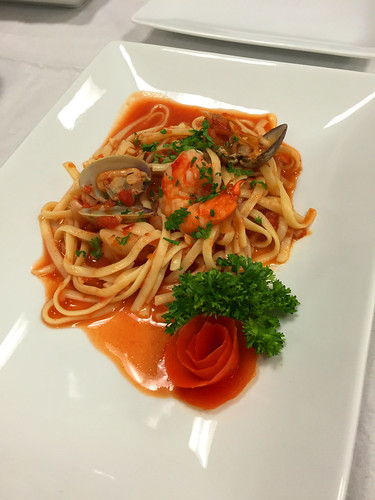
July is the height of summer grilling season and throughout the month USDA is highlighting changes made to the U.S. food safety system over the course of this Administration. For an interactive look at USDA’s work to ensure your food is safe, visit the USDA Results project on Medium.com and read Chapter Seven: Safer Food and Greater Consumer Confidence.
USDA’s National Institute of Food and Agriculture (NIFA) supports innovative research to address pressing issues. We are looking at the many ways USDA supports safe food this month, including this report from Sylvia Kantor at Washington State University’s College of Agricultural, Human, and Natural Resource Sciences:
Consumer demand for safe, high-quality, additive-free packaged foods is growing. Thanks to two recent investments in innovative food processing technology based on microwave energy, Washington State University (WSU) is advancing toward meeting this demand.
USDA’s National Institute of Food and Agriculture (NIFA) awarded WSU $4 million to establish a Center of Excellence that will accelerate the technology transfer to mainstream commercial markets. This is the first Center of Excellence on Food Safety Processing Technologies funded by NIFA’s flagship program, the Agriculture and Food Research Initiative.
In addition, the Australian government has announced a $7.2 million investment to adopt microwave assisted thermal sterilization (MATS) technology. WSU and industry partner 915 Labs will provide the system to Australia’s Ministry of Defence.
Both investments will improve ready-to-eat meals for convenience-oriented consumers and soldiers alike.
Microwave-based food processing
MATS and microwave assisted pasteurization systems (MAPS) use a combination of microwave heat and hot water to rapidly heat and briefly hold packaged food at sterilization or pasteurization temperatures and then quickly cool it.
WSU professor Dr. Juming Tang and his research team developed the technologies and processing methods. The MATS/MAPS systems currently operate at several locations around the United States, and major consumer food companies in Singapore and India have recently purchased systems.
U.S. Food and Drug Administration (FDA) acceptance of one MATS food product filed by WSU is paving the way for commercialization in the United States.
Small and midsized food companies
WSU’s Center of Excellence for Food Safety Using Microwave Energy will focus on reducing technical and regulatory hurdles for small and midsized companies to use the novel technologies in production of high-quality, safe, ready-to-eat meals.
Tang expects the technologies will help food companies comply with the FDA Food Safety Modernization Act (FSMA) and will particularly benefit rural communities, where most small and medium companies are located.
“Typically, small to midsized companies don’t have the expertise and infrastructure to develop and test new technologies themselves,” he said. “This funding allows us to provide hands-on facilities for them to develop their own products using MATS and MAPS.”
Better food for soldiers
Like the U.S. military, which has provided support for Tang’s research, Australia’s military is interested in healthier, better-tasting food options for its troops – as well as other consumers.
“Defence investment in next-generation technologies, such as MATS, will have spill-over effects into other areas of the economy and help create local jobs,” said Marise Payne, Australia’s minister of defence, in a recent press release.

